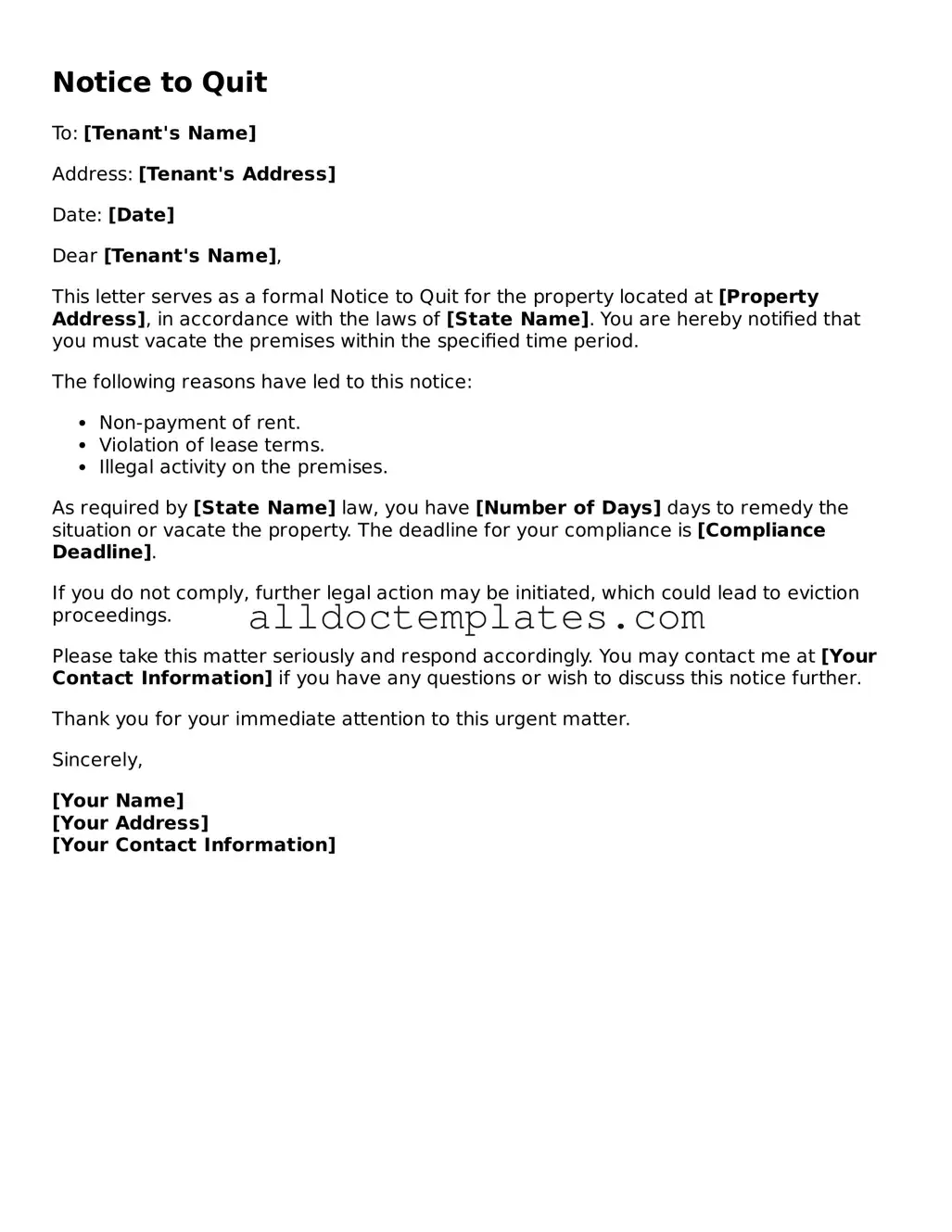Notice to Quit
To: [Tenant's Name]
Address: [Tenant's Address]
Date: [Date]
Dear [Tenant's Name],
This letter serves as a formal Notice to Quit for the property located at [Property Address], in accordance with the laws of [State Name]. You are hereby notified that you must vacate the premises within the specified time period.
The following reasons have led to this notice:
- Non-payment of rent.
- Violation of lease terms.
- Illegal activity on the premises.
As required by [State Name] law, you have [Number of Days] days to remedy the situation or vacate the property. The deadline for your compliance is [Compliance Deadline].
If you do not comply, further legal action may be initiated, which could lead to eviction proceedings.
Please take this matter seriously and respond accordingly. You may contact me at [Your Contact Information] if you have any questions or wish to discuss this notice further.
Thank you for your immediate attention to this urgent matter.
Sincerely,
[Your Name]
[Your Address]
[Your Contact Information]
